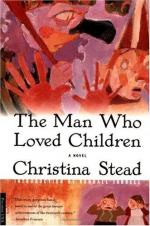|
This section contains 878 words (approx. 3 pages at 400 words per page) |

|
Point of View
The point of view used in The Man Who Loved Children by Christina Stead is third person omniscient. The third person point of view works well in the novel due to the diverse nature of the characters, particularly the parents versus the children as well as the outside opinions and observations of people like Auntie Jo or Bert. Third person omniscient allows the reader to be able to experience all of the story, giving a more detailed and thorough description of people, places and events that would not be accessible through the first person point of view.
This is especially important due to the clash in cultures and social standings. One good example can be seen in the way Henny views the people around her because she is an heiress. It does not matter in Henny's mind that her clothes are shabby and the house is...
|
This section contains 878 words (approx. 3 pages at 400 words per page) |

|




